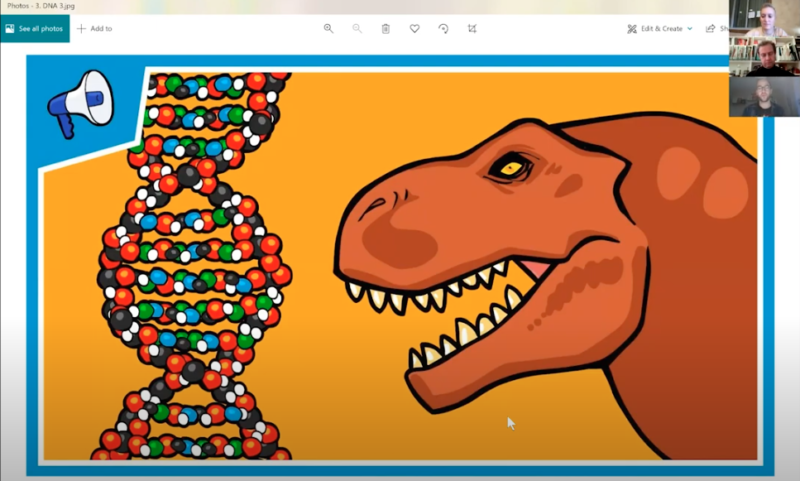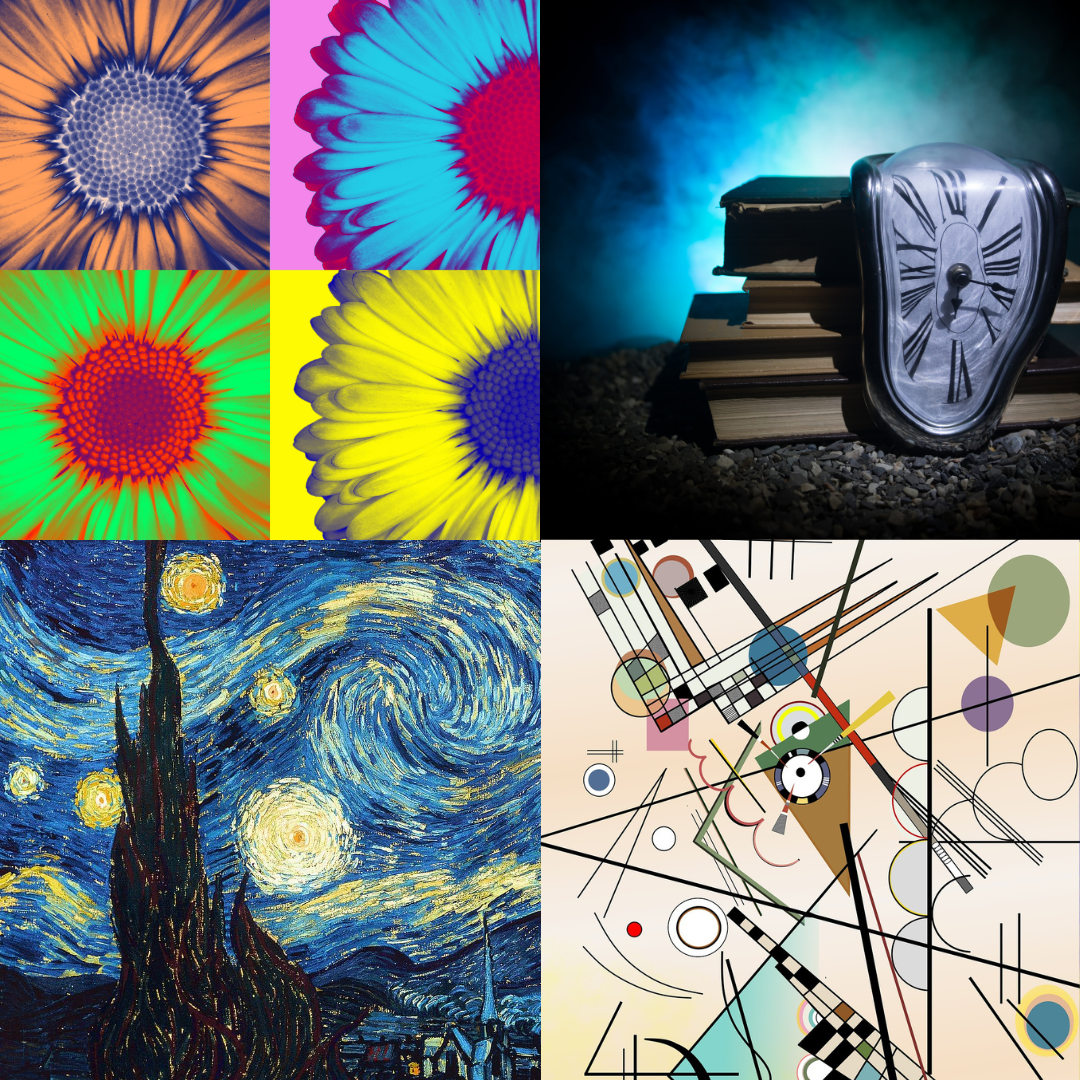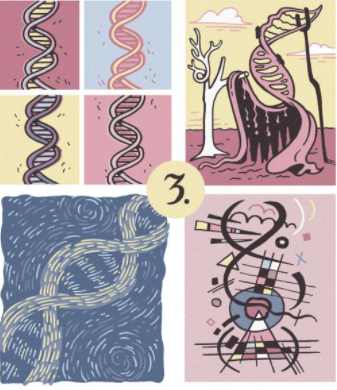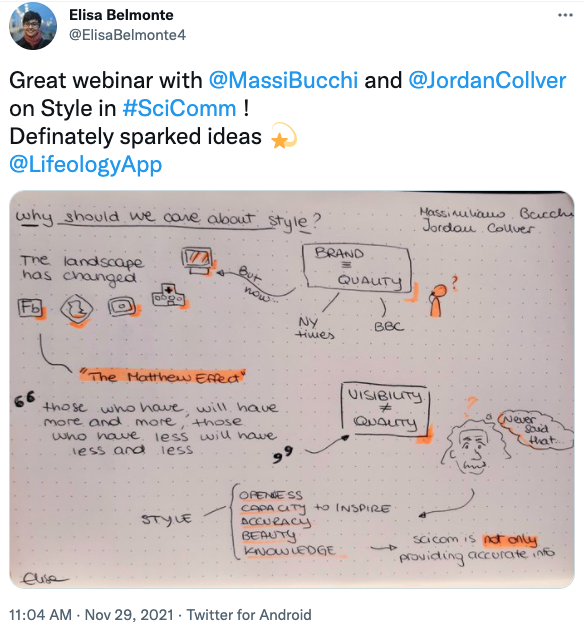Let’s practice style! Check out the full video and a recap of Lifeology’s webinar “SciComm with Style” below.
A screenshot of a Tweet from Elisa Belmonte.
On November 29, Massimiano Bucchi and Jordan Collver hosted Lifeology’s third live webinar: “SciComm with Style”! Our new webinar series brings our community topics related to SciComm and SciArt in a workshop setting, often supplementing our Lifeology SciComm University program courses.
Massimiano Bucchi is a Professor of Science and Technology in Society at the University of Trento, Italy. He’s the editor of the international journal, Public Understanding of Science, and he is the author of several books. His books have been published in more than 20 countries.
Jordan Collver is a freelance illustrator, comic artist and science communicator living in Bristol, UK. His work has been featured in The Journal of Science Communication, The Nib, BBC Focus, Skeptical Inquirer, Ionic Magazine, Magic and several comic anthologies.
Together, Massimiano and Jordan created our course “Style in Science Communication.”
We’ve attached the full video of the webinar for your viewing. You can also find a recap, including some main takeaways, below.
We were fortunate to have not only an international panel but an international audience, too! Participants joined from London, Southport UK, Dublin, Greece, Canada, U.S. and more!
What is style and how can it be used?
If you type DNA into a search engine and look at the images, you’ll see several similar visuals.
Now check out these stylized versions of DNA shared by Jordan during the webinar:

You can see that each of these images are stylized versions of DNA, so they all share the same subject but can still look different. Even a scientific drawing of the molecular structure of DNA is stylized.
There are several known artistic styles such as pop art, surrealist, impressionist, and abstract. Jordan illustrated DNA in each of these styles but combined his own style into it, too (e.g., colors). Check out the side-by-side look of examples of these known styles and Jordan’s spin on them below:

A grid of images representing pop art, surrealist, impressionist, and abstract art. Photos from Canva and Pixabay.

A grid of stylized illustrations of DNA representing pop art, surrealist, impressionist, and abstract art. Photo from Style in Science Communication course.
Style involves multiple dimensions
- Accuracy
- Beauty
- Openness
- Knowledge of contexts and audiences
- Capacity to inspire questions and social conversations
Style is important–the original DNA double helix in nature was drawn by Odile Crick, an artist and designer (and also the wife of Francis Crick)!
“Style is a concept that connects quality across media and across fields.” -Massimiano
Additionally, using visual metaphor is a style of itself. We did a challenge in October where Lifeology community members created visual metaphors for an infodemic. You can find visual metaphors sprinkled throughout the course, ”What is an Infodemic and How Can We Prevent it?,” which Jordan also illustrated.
Why should we care about style?
Style is often associated with art or fashion, but it is important in SciComm too! Style can be a signal of quality.
The landscape of SciComm has been changing. Scientists are more active in the direct interaction with audiences (through social media for example), which bypasses journalists and other trained SciCommers. This can have some consequences–what about the quality of the SciComm?
Robert K. Merton, the founder of modern sociology, coined the term the “Matthew Effect,” which says that those who have, will have more and more; those who have less, will have less and less. Relating to science, scientists who are well known will often receive more credit for comparative work of another lesser-known scientist.
For example, you take a Nobel laureate or a famous scientist and people assume what they say is accurate and of high quality just because they are who they are–even when someone is said to have said something they never actually said. Just because someone is famous in science doesn’t mean that something they say or do is of high quality or scientific.
“We often overlap the judgment of quality with the visibility of those who communicate.” -Massimiano
In the course, Massimiano and Jordan looked at original examples of style in science and science communication. The course features illustrations of Robert Hooke and Galileo Galilei. Hooke was the creator of experiments at the Royal Society, including many studies involving microscopes. The king would often ask the fellows of the Royal Society to look into a microscope, so Hooke was commissioned to do a book of drawings for the king. The drawings were said to be too beautiful and not scientific enough by the other fellows, so he just printed the book himself and it was soon a bestseller.
As a student of drawing, Galileo looked through a telescope at the moon and recognized that the shades and lines on the moon were indicators that the moon was not smooth and instead full of craters. His representation of the moon immediately influenced art. For example, a drawing of the Virgin Mary with her feet on the moon emerged, and the moon had craters like Galileo’s representation.
Examples such as these and more are included in the “Style in Science Communication” course Massimiano and Jordan created together.
“Style in science communication can allow us to better assess quality and at the same time to deal with the issue of quality without expecting to find the one-size-fits-all model.” -Massimiano and Jordan’s presentation slide.
The Collaboration
Instead of starting with all the flashcards already written, Jordan and Massimiano collaborated from the start. This is the process we prefer for our Lifeology courses so that the artist can help shape the narrative of the story from the start and often with visuals already in mind. Massimiano provided an overview of the course, and Jordan broke that information into some visual components to help form what eventually became the final cards. They relied heavily on the show vs. tell concept for this course–the course started at ~60 cards before being dwindled down to just over 30 cards. Jordan described the experience as rewarding and fun.
For Massiamiano, he described the process as something completely new to him and that it was a long but rewarding process. There were a lot of adjustments made to the course to ensure that each card was understandable and useable. He emphasized that it takes a long time to make succinct messages, but that is what makes the course insightful and promotes intrigue and interest in the topic.
The Takeaways of the Course – from the creators
- Science communication is not just about providing accurate information. It is also about culture, enjoyment, etc.
- Quality in science communication is multidimensional (accuracy, beauty, openness, knowledge of contexts and audiences and capacity to inspire questions and social conversations)
- Recognizing style and different types of styles helps us recognize the multiple dimensions of quality in science communication.
“Throughout the history of science and science communication, visual and creative representation of science has been kind of fundamental to not just talking about the science for an educational purpose but as a culture output in and of itself.”-Jordan
Read more from Massimiano and Jordan in this blog post about the creation of the “Style in Science Communication” course.
Missed last month’s webinar? Register for this month’s webinar “Getting to Know Yourself as a Collaborator” now. You can also catch the recap later this month.






